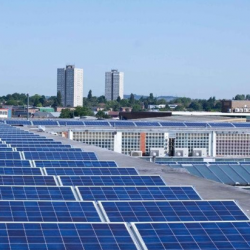Demystifying Temporary Resident Visa Applications

Credit purposes can frequently be complex and time-consuming, requesting painstaking focus on aspect and adherence to unique guidelines. But, developments in technology, particularly in the subject of artificial intelligence (AI), have revolutionized numerous industries, including the visa program process. In that blog post, we shall explore how AI is transforming visa programs, streamlining the method, and making it more available for people worldwide.
A visa request is a formal request submitted to the relevant government authorities by a person seeking permission to enter, live, or perform in a international country for a certain purpose and duration.
The mandatory documents vary depending on the state and credit type. However, popular papers add a valid passport, done charge program form, passport-sized pictures, proof vacation or accommodation bookings, financial claims, and supporting documents specific to the goal of the visit, such as for instance employment contracts or invitation letters.
AI-powered answers have significantly improved the credit software process. These programs leverage unit learning algorithms to automate various projects, such as for instance report verification, information extraction, and application status tracking. By reducing individual intervention and enhancing effectiveness, AI streamlines the process, causing quicker running instances and improved accuracy.
AI formulas may rapidly analyze and validate different documents, including passports, recognition cards, and financial statements. Through optical figure recognition (OCR) technology, AI extracts relevant data, cross-checks it against present sources, and flags any inconsistencies or discrepancies. This assures that fraudulent documents are discovered, improving security procedures and reducing the chance of identification robbery or charge fraud.
Yes, AI can somewhat improve the accuracy of visa applications. AI-powered chatbots and electronic assistants information applicants through the method, ensuring that necessary areas are finished correctly. These programs provide real-time feedback, featuring possible errors or lacking data, reducing the likelihood of program rejection or delays.nz eta
AI-driven methods accelerate the running of charge purposes by automating routine responsibilities and lowering guide intervention. With the help of AI, authorities are designed for an increased level of programs in a shorter time frame. Also, AI calculations prioritize applications centered on particular standards, such as for example desperation or complexity, optimizing source allocation and minimizing running delays.
The integration of AI into the visa application process has somewhat simple and expedited the overall experience for applicants and authorities alike. By harnessing the ability of AI, people are now able to navigate the complex demands with larger simplicity and confidence, lowering the odds of problems or omissions.
Artificial intelligence has changed the charge software method by automating various responsibilities, increasing precision, and expediting processing times. As AI remains to advance, we are able to assume more enhancements in report affirmation, application submission, and overall user experience. With AI-powered alternatives, charge purposes are getting more available, efficient, and trusted, opening gates to global vacation and opportunities.




Ingen kommentarer endnu